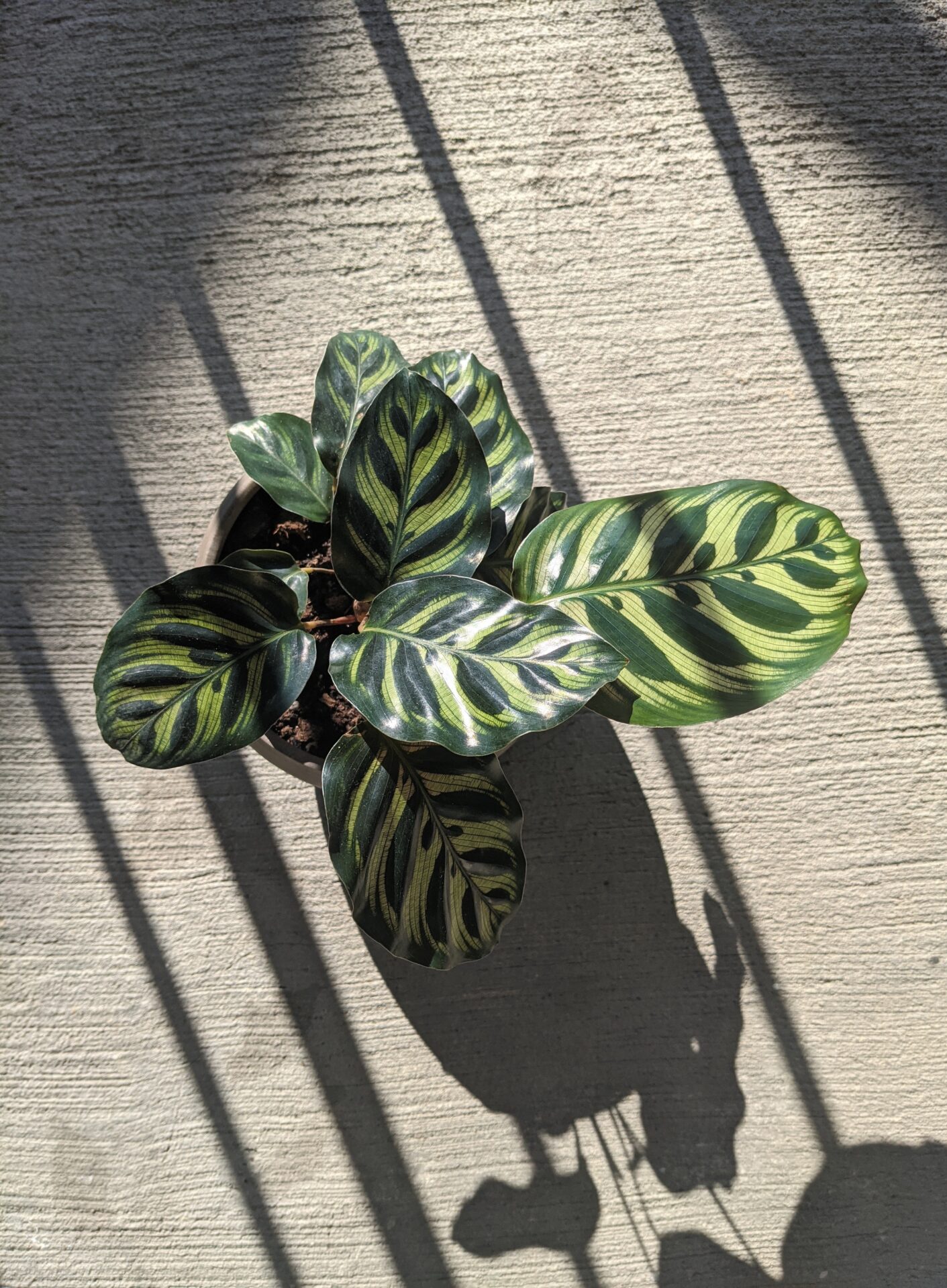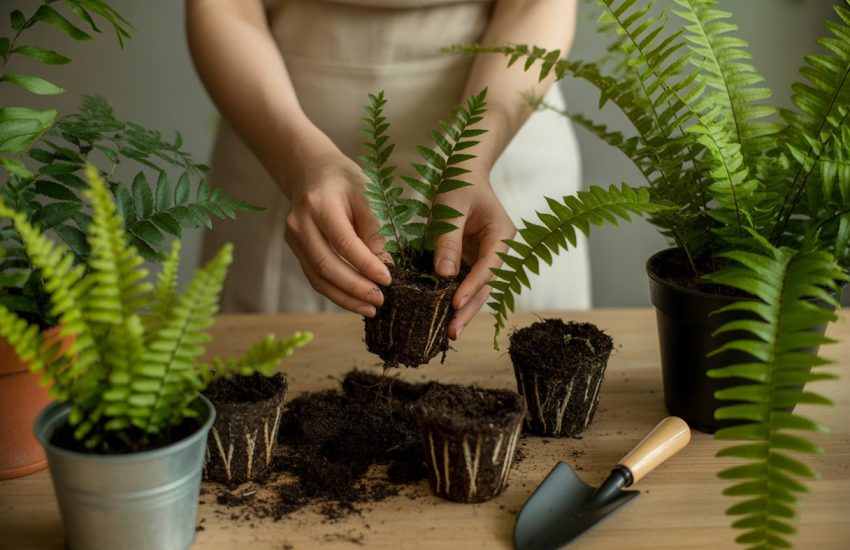Calathea Setosa: How to Grow and Care
Calathea setosa is a tropical plant that goes by various names such as Never Never Plant, Compact Star Plant, and Zebra Plant. These perennial plants from the Marantaceae family require a humid climate as their place of origin is the Rainforests in Brazil, which has a tropical climate. Several species of Calathea setosa aid in purifying the air, making it a preferred houseplant.

Description of Calathea setosa
The average size of the Calathea setosa is around 40 cm to 70 cm. However, as an indoor Plant in a pot, it could grow around an average of 15cm. The Calathea setosa forms an excellent indoor plant because of its alluring decorative appearance.
These tropical evergreen plants are categorized with large and broad leaves. The leaves of these plants are silver in color with dark green veins on the dorsal side and purple on the ventral side, thereby making them bicolored and variegated.
Nyctinasty of Calathea setosa
The most unique feature of the Calathea setosa is Nyctinasty. Nyctinasty is a very special movement performed by the leaves. The leaves of the Calathea setosa close every night and they reopen every morning. This process, known as Nyctinasty is exhibited by the Calathea setosa.
The closure of the leaves is shaped like that of hands at prayer. This is the reason that the Calathea setosa is also called a Praying Plant. Marantacea is the common family of all such praying plants, under which the Calathea setosa also holds a place
Calathea setosa species
There are several species of Calathea setosa. They all hold major resemblances and differ in minute ways. A few popular and common species are
-Calathea veitchiana (Medallion calathea),
-Calathea lancifolia (Rattlesnake calathea),
-Calathea ornata (Pinstripe calathea)
-Calathea roseopicta (Calathea Dottie)
Origin of Calathea setosa
The Calathea setosa belongs to the genus Ctenanthe, which belongs to the family of Marantaceae. The Calathea setosa was first mentioned by Charles Jacques Edward Morren and Karl Mortiz Schumann in 1902. Since then, the Calathea setosa, a tropical plant from Brazil has become a famous house plant.
See Also: Pineapple Farming
Care for Calathea setosa
Calathea setosa, with its appealing leaves, makes it as a desirable houseplant. However, the Calathea setosa requires certain care and attention to remain alive and thrive. With the pace of growth being at a moderate rate, the problem of pruning does not arise. With a little information and awareness, the Calathea setosa could be maintained and grown and ensure its development.
Potting
Since the zebra plant is a medium-sized plant, medium-sized pots would be the most appropriate, instead of smaller or larger-sized pots. One medium-sized pot for each zebra plant could ensure the rate of survival of the plant. The material of the said pot could be made from anything, including stone, plastic, clay, and terra-cotta as long as there is a drain hole.
A drain hole is the most important factor to keep in mind while selecting a pot for the zebra plant as a drain hole ensures that the excess water gets drained. This is very vital as excessive water is very harmful to Calathea setosa and the standing water has the potential to even kill the plant.
Repotting
The growth rate of the zebra plant is moderately paced. Thus, repotting them to a bigger pot could be done after 1 or 2 years according to the growth. Calathea setosa does not respond well when its roots are disturbed. Thus, the utmost care has to be taken to protect the roots and do minimum damage to its roots while re-potting the plant
Soil
Just like all the other plants, the zebra plant can grow and survive in all commercial Pottery soils. However, to ensure the growth and development of the Calathea setosa, it would be necessary to ensure that the soil is evenly packed with moisture. Though the zebra plant prefers and requires moisture, it would not survive in the case of standing water.
Excessive water has the potential to kill the plant and thus must be avoided at all costs. To achieve an even healthier plant, the soil could be created by a combination of peat, perlite, and sand. Such a combination of soil would yield a healthy plant. Adding some coarse material and girt would be very effective as this would increase aeration in the soil. Making the soil in such a manner would benefit the zebra plant greatly.
pH value of the soil
The PH value of the soil affects the growth of various plants. Like most tropical plants, Calathea Setosa prefers neutral to acidic soil. This signifies that the PH level of the soil must be in the range of 6.1 to 7.1. Thus, the PH level of the soil can be modified and altered to best suit the needs of the plant. Wood ash and dolomite lime are a few factors that can change the PH value of the soil.
In the case of the basic soil, the acidity needs to be increased to ensure the survival of the zebra plant. Thus, in such cases, baking soda or wood ash could be added to correct the PH value of the soil and make it acidic enough for the plant. In case of excessive acidity, the soil has to be corrected to reduce the acidity. By adding sulfur or aluminum sulfate, the acidity of the soil could be brought down, thereby giving the Calathea setosa the soil it requires
water
Another basic component for any plant or living organism to survive is water. The need and requirement for water change from one plant to another. The Calathea setosa has unique features regarding its water requirements. The interaction of Calathea setosa with water must be paid due attention to ensure the survival of the plant.
Zebra plant prefers the soil to be moist and not wet. Even moisture spread over the entire soil is the most appropriate condition for Calathea setosa. The soil must never be wet as zebra plant does not prefer excess water. The best way to provide water to zebra plants is to wet and soak only the top 2 inches of the dry soil. This is the preferred method to ensure there is even moisture in the soil.
Another important aspect while dealing with water is that special care must be taken to prevent water from falling on the leaves of the Zebra plant. Water on the leaves of Calathea setosa is undesirable as it could lead to a fungal attack which is quite risky.
Due importance has to be given to the drain holes in the pot as this is vital for removing the excess water which is very bad for zebra plants. The use of distilled water for the hydration of the plant is the most preferred way as there are certain instances where tap water could not suitable for the plant. Zebra plants may not cope with certain compounds found in tap water due to which distilled water had to remain the first choice
Light
The most complicated factor in maintaining the development of Calathea setosa is the management of light. All plants require light for their growth and development. The exposure and intensity of light needed changes for every species. The Calathea setosa, being a tropical plant requires a minimum of 6 to 8 hours of light in a day for its survival. The light required by Calathea setosa for 8 hours need not use sunlight as its only source. LED lights could be used as an alternative too.
However, in case the exposure of light to the Calathea setosa is from the sun, extra care and precautions have to be taken so as not to expose to direct sunlight. Direct sunlight is very bad for Calathea setosa as it causes loss of coloration in its leaves. This could ultimately even kill the plant. This is the main reason that Calathea setosa serves better as an indoor plant.
Similarly, lesser light, where the light is dim could also lead to various issues. Dim light will cause Calathea setosa to lose its variegated structure. Thus, both heavy and dim light cause extreme discomfort to the plant, and prolonged exposure to such a situation will result in the death of the plant. Caution must be taken to ensure the plant gets moderate light for 6 to 8 hours a day for its development and growth.
Fertilizer
Fertilization of the soil is not required as the plant can thrive without it. However, it becomes a necessity to use natural and artificial fertilization if the plant does not show sufficient growth.
Humidity
Humidity also affects the growth of a plant. 60% of Humidity is preferred by the zebra plant. Humidity lesser than 60% could cause brown leaves and crispy leaves which are very bad for the plant’s health. Thus, the zebra plant must be placed in a well-lit and humid place or a humidifier must be used.
Temperature
Zebra plant, being tropical plant, requires a warm climate throughout the year. A temperature of 75°F is optimum and must be maintained at all times. During the winter, special care must be taken to keep the plant warm and protect it from the cold.
Calathea setosa plant propagation
Stem cutting in soil
The most common way to propagate is stem cutting in soil. This is the simplest and easiest way to propagate a Calathea Setosa. The first step is to secure a cutting. A newly grown part of q healthy plant has to be cut. Such a cutting must have a minimum of 3 inches with nodes in it. The cutting must then be buried with the nodes under the soil. To ensure growth, the cutting has to be moisturized and kept in moderate sunlight for around 8 hours a day. This will ensure that the shoots grow from the cutting. Once the growth of shoots is visible, it is mandatory to assume that the development of roots has taken place too.
Stem cutting in water
In this case, a part of the stem is cut below the node where the flowers and leaves are removed. This cutting is then submerged I’m water. Utter care has to be taken to ensure that there are no leaves on the underwater stem. The stem must be kept near the window for sufficient light. Shoots and roots will begin to appear and the process of potting can begin.
Division
All plants which grow stems in clumps could be propagated by the method of Divide. In this case, the first step is to dig and then separate the stems along with their roots from the clumps. This could be done with gardening tools or even with gloved hands. The roots so taken must be repotted and the same care has to be given to its growth.
Problems faced by Zebra plant
The major problem faced by Calathea setosa is the drying of leaves and leaf curling. This is mainly caused due to the fact of hard water or low water supply. Lack of humidity could also be a factor. Similarly, excessive water also creates problems for Calathea setosa. Excessive water causes the yellowing of its leaves. The problem of excessive fertilization along with lack of moisture could cause the browning of leaves. This could ultimately cause the plant to wither up. Drooping of leaves is an impact of lack of warmth and moisture. These problems have a simple solution and can be easily corrected. However, when ignored it could cause potential hazards.
Conclusion
Calathea setosa is a unique plant with beautiful leaves and an appealing loom which is preferred for its ability to purify the air. Thus with some knowledge and idea of how to sustain its development, the Zebra plant could thrive.

